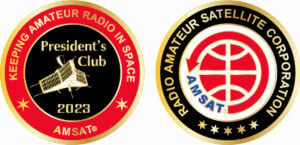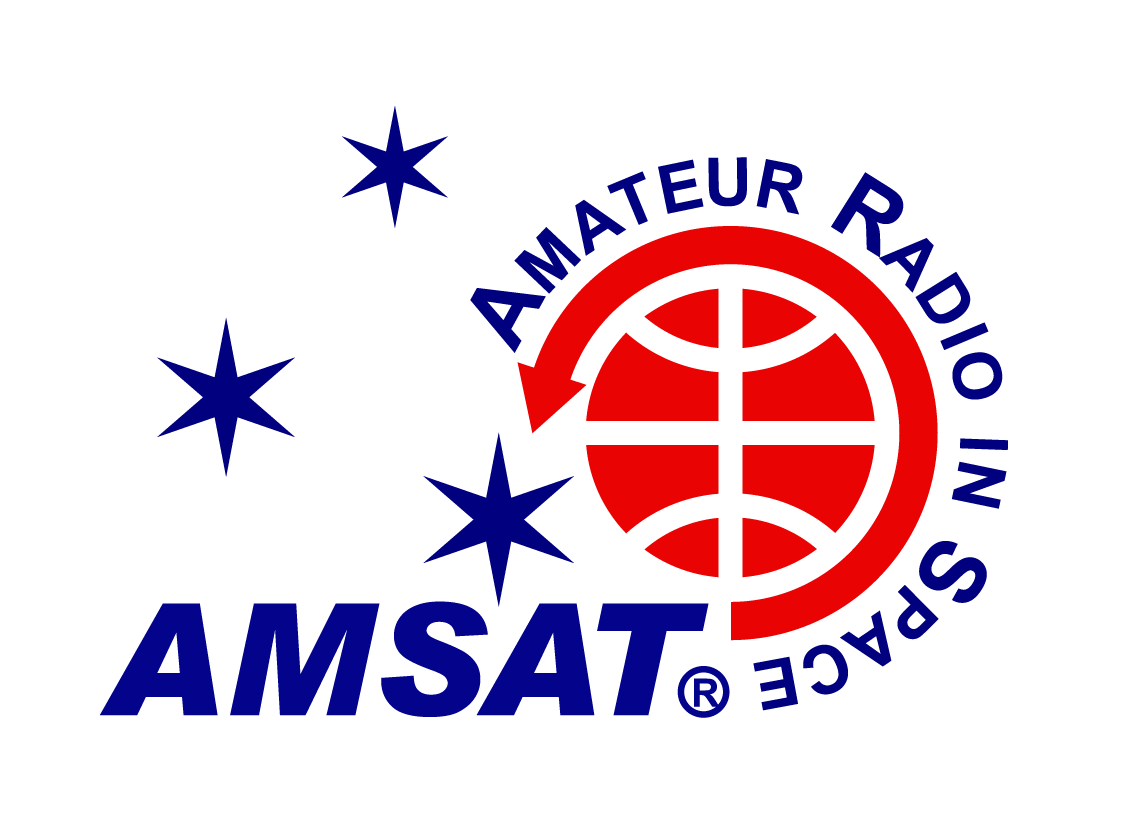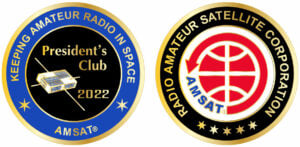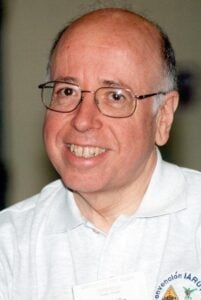In this edition:
* FalconSat-3 Nears Re-entry
* More Amateur Radio Astronauts Head for the ISS
* Changes to AMSAT-NA TLE Distribution
* Why We Don’t Call CQ on FM Birds
* ARISS News
* Upcoming Satellite Operations
* Hamfests, Conventions, Maker Faires, and Other Events
* Satellite Shorts From All Over
The AMSAT News Service bulletins are a free, weekly news and information service of AMSAT, The Radio Amateur Satellite Corporation. ANS publishes news related to Amateur Radio in Space including reports on the activities of a worldwide group of Amateur Radio operators who share an active interest in designing, building, launching and communicating through analog and digital Amateur Radio satellites.
The news feed on http://www.amsat.org publishes news of Amateur Radio in Space as soon as our volunteers can post it.
Please send any amateur satellite news or reports to: ans-editor [at] amsat.org
You can sign up for free e-mail delivery of the AMSAT News Service Bulletins via the ANS List; to join this list see: https://mailman.amsat.org/postorius/lists/ans.amsat.org/
ANS-015 AMSAT News Service Weekly Bulletins
To: All RADIO AMATEURS
From: Radio Amateur Satellite Corporation
712 H Street NE, Suite 1653
Washington, DC 20002
DATE 2023 Jan 15
FalconSat-3 Nears Re-entry
A number of amateurs and satellite watchers have put forward predictions concerning the date and time of re-entry for FalconSat-3. While all re-entry predictions are something of a guessing game, due to the large number of variables affecting the upper atmosphere, one thing that can be said for certain is that the end for FS-3 will be coming very soon, quite possibly within the next week.
AMSAT Board Member and FS-3 control operator, Mark Hammond, N8MH, has stated that he will try to have the bird operational for its final hours. The satellite has only been available for approximately 24 hours each weekend due to weak batteries.
FalconSAT-3 was built in 2005 and 2006 by cadets and faculty in the Space Systems Research Center at the US Air Force Academy in Colorado Springs, Colo. It is the fourth in a series of small satellites designed, built and operated there as part of a capstone course and which brings together about 30 cadets each year from several different academic departments.
Since its launch on an Atlas V from Cape Canaveral in March, 2007, it has been through three mission phases. The first mission phase was operation of the science payloads. In the second it was used as a tool for training cadets in the space operations squadron and students in both undergraduate space training in California and graduate students at the Air Force Institute of Technology. Finally, it’s third mission phase was as an on-orbit resource in the Amateur Radio Service (ARS). Operation as an ARS satellite was being managed by AMSAT-NA.
In amateur service the downlink is at 435.103 MHz transmitting 1W into a ¼ whip. The uplink is at 145.840 MHz and the receive antenna is a ¼ whip on the opposite side of the satellite. All UHF and S-band equipment on NTIA licensed frequencies has been disabled. The ARS VHF receiver is very sensitive. Modulation is 9600 bps GMSK for the uplink and downlink. The broadcast callsign is PFS3-11, and the BBS callsign is PFS3-12, Unproto APRS via PFS3-1.
The core avionics were designed and built by Mark Kanawati, N4TPY, and Dino Lorenzini, KC4YMG at SpaceQuest Ltd. and have performed remarkably well for nearly 16 years on orbit. Jim White, WD0E, was the lead engineer for FalconSAT-3 at the Air Force Academy (USAFA) and managed the design, construction, testing and early operations of the satellite.
Nearly 700 cadets at USAFA obtained their amateur radio licenses as part of training to operate FalconSAT-3 and other USAFA satellites. They have taken that knowledge and understanding of the value of the ARS into their Air Force service and many on into industry. Since FalconSAT-3 the USAFA Astronautics Department has built and operated one additional satellite and has two more queued for launch. The space operations curriculum and the ground station are being rebuilt and configured for these new space assets.
The success of FalconSAT-3 is an excellent example of how amateur radio can be integrated into the curriculum of an education institution for the benefit of the students and the amateur radio service.
[ANS thanks Sasha Timokhov, VE3SVF, Jean Marc Momple, 3B8DU, and Mark Hammond, N8MH, AMSAT Operations, for the above information]
+=+=+=+=+=+=+=+=+=+=+=+=+=+=+=+=+=+=+=+=+=+=+=+=+=+=+=+=+=+=+=+=+=+=+

The 2023 AMSAT President’s Club coins are here now!
To commemorate the 40th anniversary of its launch
on June 16, 1983, this year’s coin features
an image of AMSAT-OSCAR 10.
Join the AMSAT President’s Club today and help
Keep Amateur Radio in Space!
https://www.amsat.org/join-the-amsat-presidents-club/
+=+=+=+=+=+=+=+=+=+=+=+=+=+=+=+=+=+=+=+=+=+=+=+=+=+=+=+=+=+=+=+=+=+=+
More Amateur Radio Astronauts Head for the ISS
Three of the four new astronauts on February’s planned launch of the SpaceX Crew-6 mission to the International Space Station (ISS) are amateur radio operators.
Pilot Warren “Woody” Hoburg, KB3HTZ; Commander Stephen Bowen, KI5BKB, and Mission Specialist Sultan Al Neyadi, KI5VTV, will join Mission Specialist Andrey Fedyaev on board the SpaceX Dragon spacecraft, Endeavour.
The spacecraft will be atop a Falcon 9 rocket and, while a launch date has not been selected, the earliest date would be mid-February 2023.
All crew members have learned about Amateur Radio on the International Space Station (ARISS), received guidance on studying and testing, and learned how to operate the ARISS radios and the basics of on-the-air protocol from ARISS team members at NASA’s Johnson Space Center.
The crew will be able to participate in ARISS, using the ham radio station on the ISS to contact schools and other educational institutions.
ARISS is a cooperative venture of international amateur radio societies and the space agencies that support the ISS. In the US, participating organizations include NASA, the ISS National Lab, ARRL The National Association for Amateur Radio, and AMSAT.
[ANS thanks ARRL for the above information]
+=+=+=+=+=+=+=+=+=+=+=+=+=+=+=+=+=+=+=+=+=+=+=+=+=+=+=+=+=+=+=+=+=+
Need new satellite antennas? Purchase Arrows, Alaskan Arrows,
and M2 LEO-Packs from the AMSAT Store. When you purchase through
AMSAT, a portion of the proceeds goes towards
Keeping Amateur Radio in Space.
https://amsat.org/product-category/hardware/
+=+=+=+=+=+=+=+=+=+=+=+=+=+=+=+=+=+=+=+=+=+=+=+=+=+=+=+=+=+=+=+=+=+
Changes to AMSAT-NA TLE Distribution
Two Line Elements or TLEs, often referred to as Keplerian elements or keps in the amateur community, are the inputs to the SGP4 standard mathematical model of spacecraft orbits used by most amateur tracking programs. Weekly updates are completely adequate for most amateur satellites. TLE bulletin files are updated Thursday evenings around 2300 UTC, or more frequently if new high interest satellites are launched. More information may be found at https://www.amsat.org/keplerian-elements-resources/
No changes this week.
[ANS thanks Ray Hoad, WA5QGD, AMSAT Orbital Elements Manager, for the above information]
+=+=+=+=+=+=+=+=+=+=+=+=+=+=+=+=+=+=+=+=+=+=+=+=+=+=+=+=+=+=+=+=+=+
Want to fly the colors on your own grid expedition?
Get your AMSAT car flag and other neat stuff
from our Zazzle store!
25% of the purchase price of each product goes
towards Keeping Amateur Radio in Space
https://www.zazzle.com/amsat_gear
+=+=+=+=+=+=+=+=+=+=+=+=+=+=+=+=+=+=+=+=+=+=+=+=+=+=+=+=+=+=+=+=+=+
Why We Don’t Call CQ on FM Birds
Please do not CQ on FM birds. It is not necessary and takes up valuable air time. If there are no QSOs ongoing, AND there is no station you heard that you want to call, you can key up and give your call and grid ONLY and unkey. But, please, do this sparingly! Instead of doing it over and over, listen and wait for another station you might want to work. In other words, you have to give others a chance to get in there. I have heard many passes where it was constantly one station after another CQing or announcing their call and I couldn’t get it to call anyone! And if there is a rover on the pass giving out a rare grid, it is customary to let them have the air and work as many stations as they can until they have worked them all who are seeking them. (Which will changes as the sat passes over new territory and new callers wanting to work the rover come into range.) It may mean you get only one QSO that pass (or none of you don’t need the grid he is in) but it’s about sharing a resource wisely and giving everyone the most benefit. A pass full of CQs or a pass of contacts where everybody makes one QSO with a rare grid.
If you add up all the seconds spent by people CQing, or continually announcing themselves you’ll see what a significant percentage of a pass is wasted. They say, ‘Well no one else was on.’ Right… because they couldn’t get through due to all the CQing! Satellites is like HF DXing… listen, listen and when in doubt, listen.
Then there is the simple fact that CQing has NEVER been a thing on the FM mode… not on repeaters, not on simplex. The longstanding custom on FM, because of the nature of the way the audio works, is to simply announce your call. Such as, ‘N4UFO listening 52″ on 146.520 simplex, or ‘N4UFO monitoring’ over a 2m FM repeater… the ‘CQ’ part is implied. That said, why is CQing on SSB not only okay, but necessary? FM birds are one channel and you can hear everyone plain as day right there. With linear birds, there is a passband and stations are spread out… CQing is for catching everyone else’s attention as they tune around. They will hear either your high pitched squeaky voice or low rumbling voice speaking in the familiar rhythm of ‘CQ, CQ, CQ’ as they tune around. In short, they use your ‘CQ’ as a way to tune around and FIND you, then TUNE you in. This is not necessary on FM. And also not necessary to CQ on SSB once the station starts making contacts.
There is also a tendency on linear birds when a rare grid station is expected to be on a pass to start blind calling. Please do not do that either! I have a short writeup on my rover page to explain it… it’s on the bottom of the page here: https://www.qrz.com/db/N4UFO/P (also pics & stories of my roving adventures & my gear)
And THANK YOU for ASKING!!!
[ANS thanks Kevin Manzer, N4UFO, for the above information]
ARISS NEWS
Amateurs and others around the world may listen in on contacts between amateurs operating in schools and allowing students to interact with astronauts and cosmonauts aboard the International Space Station. The downlink frequency on which to listen is 145.800 MHz worldwide.
Escola Secundária de Lagoa, Lagoa, Azores, telebridge via IK1SLD. The ISS callsign is presently scheduled to be OR4ISS, and the scheduled crewmember is Josh Cassada, KI5CRH. Contact is go for: Thu 2023-01-19 18:20:34 UTC 55 degrees maximum elevation. Watch for Livestream starting about 15 minutes before AOS at http://www.ariotti.com/
Nizhny Novgorod, Russia, direct via TBD. The ISS callsign is presently scheduled to be RSØISS, and the scheduled crewmember is TBD. Contact is go for 2023-01-24 TBD.
Krasnodar, Russia, direct via TBD. The ISS callsign is presently scheduled to be RSØISS, and the scheduled crewmember is TBD. Contact is go for 2023-02-TBD TBD.
The latest information on the operation mode can be found at https://www.ariss.org/current-status-of-iss-stations.html
The latest list of frequencies in use can be found at https://www.ariss.org/contact-the-iss.html
[ANS thanks Charlie Sufana, AJ9N, one of the ARISS operation team mentors for the above information]
Upcoming Satellite Operations
W8LR: is heading to EN90 and EM99 1/15/23 FM and Linear.
Chris VE3FU / VO2AC / VO1FUA / VE2FUA: The weekend of January 27-29 @Dave_VE3KG and I will be competing in the CQ160 CW Contest as VO2AC from the Point Amour Lighthouse in Labrador (Zone 2). We’ll also be on the other HF bands starting January 24 as VO2AC and VO2AAA. Please work us in the contest! We also plan on operating the linear and FM satellites from grid GO11 as VO2AC and VO2AAA from January 24-27.
Please submit any additions or corrections to Ke0pbr (at) gmail.com
[ANS thanks Paul Overn, KE0PBR, AMSAT rover page manager, for the above information]
Hamfests, Conventions, Maker Faires, and Other Events
AMSAT Ambassadors provide presentations, demonstrate communicating through amateur satellites, and host information tables at club meetings, hamfests, conventions, maker faires, and other events.
AMSAT Ambassador Clint Bradford K6LCS has a few satellite presentations scheduled …
-Ontario, Canada (1/16/23)
-Thames Valley, England (5/11/23)
Think a 90-minute lively, informative, and fun “How to Work the Easy Satellites” Zoom presentation would be appropriate for your convention or club? Always included are overviews of the ARRL, AMSAT, and ARISS. And pre-presentation questions are welcome.
[ANS thanks Paul Overn, KE0PBR, AMSAT Events page manager, for the above information]
Satellite Shorts From All Over
+ Paul Overn, KE0PBR, has announced his intent to “retire” from the Gridmaster Heat Map project that he has moderated on Twitter for the past three years. Paul has assisted many grid chasers by relaying information about rovers, and keeping tabs of which grids are in greatest need. Unless someone steps forward to pick it up, Gridmaster Heat Map will disappear next month. Thanks to Paul for your valuable contribution to satellite operations! (ANS thanks Paul Overn, KE0PBR, for the above information)
+ Two astronauts on the International Space Station will conduct a spacewalk Friday, Jan. 20, to install hardware for future power system upgrades. NASA astronaut Nicole Mann and Japan Aerospace Exploration Agency (JAXA) astronaut Koichi Wakata, KC5ZTA, will exit the station’s Quest airlock to complete the installation of two mounting platforms as part of planned solar array augmentation on the starboard side of the International Space Station’s truss. NASA will provide live coverage beginning at 7 a.m. EST. The spacewalk is scheduled to begin at 8:15 a.m., and last about six and a half hours. [NOTE: All ARISS operations are shut down during spacewalks.] (ANS thanks NASA for the above information)
+ There was an error in the January VUCC standings reported in last week’s ANS bulletins. The entry for K7ZOO, at the top of the table, is not valid and should not have been included. ANS apologizes for the error.
+ The National Science Foundation (NSF) has reached an agreement with SpaceX to mitigate the effects of the company’s second-generation Starlink satellites on astronomy, even as another organization goes to court to block the constellation’s deployment. NSF, which funds operations of several major observatories, announced Jan. 10 that is had completed an astronomy coordination agreement with SpaceX regarding its Gen2 Starlink constellation. The Federal Communications Commission granted a license Dec. 2 to allow SpaceX to deploy a quarter of that 30,000-satellite system while deferring consideration of the rest of the constellation. That coordination agreement was a condition of the Gen2 FCC license. (ANS thanks SpaceNews for the above information)
+ A vintage NASA satellite launched in the 1980s and long-since turned to space junk met a fiery fate late Sunday as it fell back to Earth. The huge Earth observation satellite, called the Earth Radiation Budget Satellite (ERBS), plunged back to Earth Sunday night (Jan. 8) at 11:04 p.m. EST (0304 GMT on Monday). The 5,400-pound (2,450 kilograms) satellite reentered over the Bering Sea, with some components potentially surviving the super-hot temperatures of reentry. (ANS thanks Space.com for the above information)
Join AMSAT today at https://launch.amsat.org/
In addition to regular membership, AMSAT offers membership to:
* Societies (a recognized group, clubs or organization).
* Primary and secondary school students are eligible for membership at one-half the standard yearly rate.
* Post-secondary school students enrolled in at least half time status shall be eligible for the student rate for a maximum of 6 post-secondary years in this status.
* Memberships are available for annual and lifetime terms.
Contact info [at] amsat.org for additional membership information.
73 and remember to help Keep Amateur Radio in Space!
This week’s ANS Editor, Mark Johns, KØJM
k0jm [at] amsat.org


